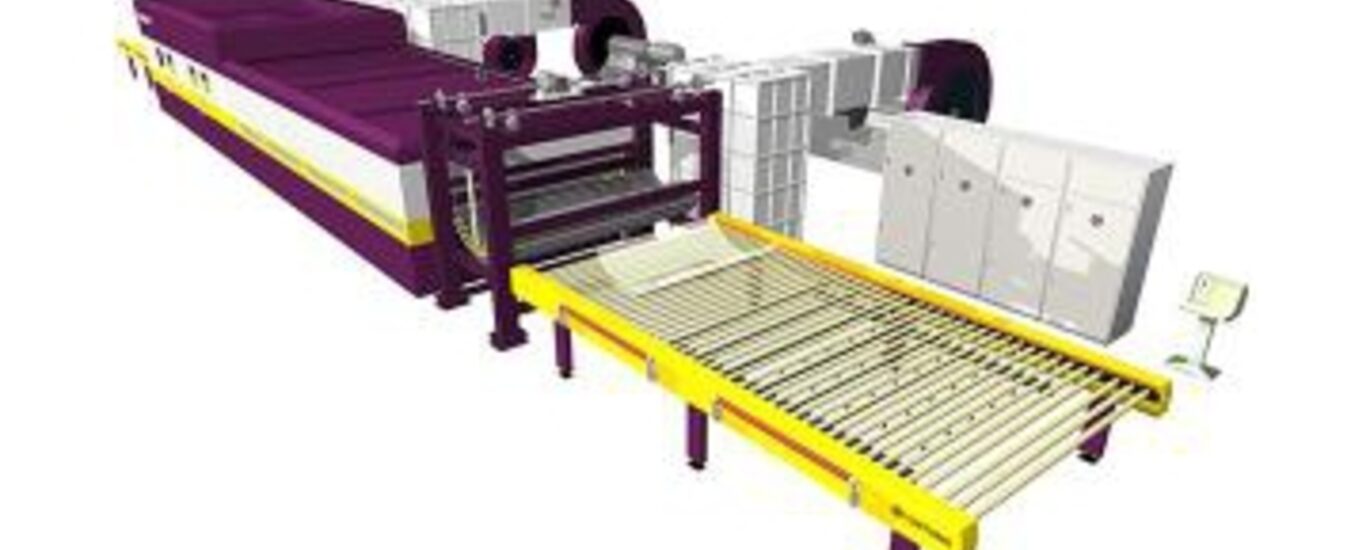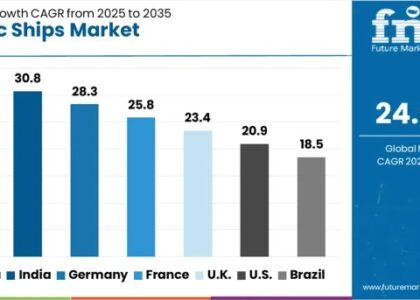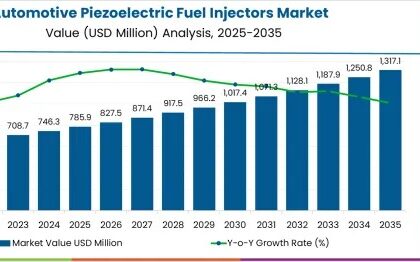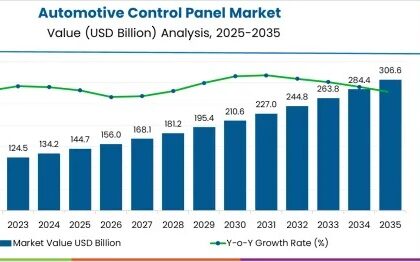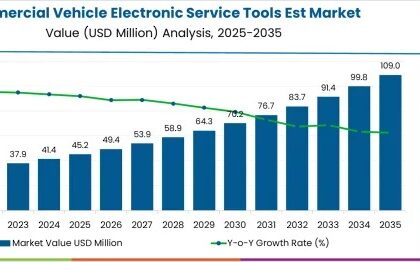The Glass Tempering Systems Market report, unveiled by Future Market Insights—an ESOMAR Certified Market Research and Consulting Firm—presents invaluable insights and meticulous analysis of the Glass Tempering Systems market. Encompassing the research’s scope and essence, this report scrupulously examines the driving factors, market size, and predictive data for Glass Tempering Systems. It furnishes intricate revenue and shipment segmentations, accompanied by a decade-long projection up to 2033. Additionally, the document evaluates key industry players, their market distribution, the competitive scenario, and regional perspectives.
The global glass tempering systems market is poised for significant expansion and is expected to reach a valuation of approximately USD 71,389.8 million by the conclusion of 2023. This noteworthy trajectory reflects a reinvigorated industry, marked by a robust adoption rate across critical sectors such as automotive, architecture, and electronics. Forecasts suggest a consistent and substantial CAGR of 4.8% during the period from 2023 to 2033, ultimately resulting in an impressive valuation of approximately USD 108,864.8 million by the year 2033.
Driving Factors Accelerating the Global Glass Tempering Systems Market
- Thriving Automotive Industry: The automotive sector, a perennial powerhouse of innovation, is fervently embracing glass tempering systems. Enhanced safety and design aesthetics have become paramount, driving the demand for tempered glass in vehicle manufacturing. This thrust is compelling automakers to integrate advanced tempering technologies into their production processes.
- Architectural Advancements: Aesthetic excellence, energy efficiency, and security are pivotal in modern architectural designs. Glass, due to its versatility, has become the cornerstone of these architectural advancements. Glass tempering systems play a pivotal role in ensuring the durability and safety of architectural glass, leading to a surge in their adoption within the construction industry.
- Electronics on the Rise: The relentless march of technology places ever-increasing demands on electronic devices. Tempered glass is a linchpin in the production of durable, shatter-resistant screens for smartphones, tablets, and other gadgets. As consumer electronics continue to proliferate, so too does the demand for glass tempering systems.
- Stringent Safety Regulations: Governments and regulatory bodies worldwide are becoming more stringent in their safety regulations, particularly in sectors like automotive and construction. Glass tempering systems offer compliance with these rigorous standards, making them indispensable in ensuring product safety and adherence to regulations.
- Sustainability Surge: With the global emphasis on sustainability and environmental responsibility, tempered glass is gaining traction due to its recyclability and energy-efficient properties. Businesses are leveraging this trend to meet the demands of eco-conscious consumers and reduce their carbon footprint.
Challenges Hindering Market Growth
While the glass tempering systems market is primed for unprecedented growth, it is not without its challenges:
- High Initial Investment: Implementing advanced glass tempering systems requires a significant upfront investment. This can be a deterrent for smaller businesses looking to enter the market or upgrade their existing equipment.
- Intensive Technological Expertise: Operating and maintaining tempering equipment demands a high level of technical expertise. Businesses may face challenges in sourcing and retaining skilled personnel.
- Fluctuating Raw Material Costs: The cost of raw materials for tempered glass, particularly high-quality glass, can fluctuate due to market conditions. This can affect profit margins and pricing strategies.
- Global Supply Chain Disruptions: The glass industry, like many others, is susceptible to supply chain disruptions, including raw material shortages and transportation bottlenecks. These disruptions can impact production schedules and delivery times.
Key Takeaways: Integration of Advanced Technologies in Glass Tempering
- Automation in Flat Tempering: Key manufacturers are adopting advanced technologies to automate flat tempering processes, streamlining production and improving efficiency.
- Online Stress Calculation: The use of an online stress calculation solution, which leverages process data, helps in real-time assessment of temperature and stress distribution during quenching in the tempering process.
- Tempering Process Autopilot: Automation reduces the need for constant operator input, offering precise process control without manual adjustments, enhancing efficiency and consistency.
- Benefits for Customers: Customers benefit from these innovations with increased bed utilization, leading to improved energy efficiency, greater capacity, enhanced quality, repeatability, and enhanced operational safety.
- Predictive Maintenance: Machines equipped with these technologies can proactively manage predictive maintenance, minimizing downtime, and can suggest spare part replacements when needed, optimizing overall equipment performance.
Competitive Landscape
Leading manufacturers of glass tempering systems are aggressively expanding their customer base by actively participating in global exhibitions, where they showcase their cutting-edge products and innovations. Additionally, they maintain a relentless focus on enhancing their existing product portfolios while simultaneously developing innovative, high-quality, and dependable products. Merger and acquisition activities are also a strategic imperative for these companies, aimed at bolstering their global presence.
Furthermore, these manufacturers are deeply committed to the integration of artificial intelligence (AI) in automating the glass tempering process. For instance, on August 17, 2022, Glaton Corporation unveiled its latest advancement in automating flat tempering, introducing an online stress calculation solution that utilizes real-time process data to compute temperature and stress distribution within the quenching segment of the tempering process.
Notable recent developments in this dynamic industry include:
- In 2020, Hegla significantly expanded its foothold in the glass processing sector by introducing the CTF series of flat glass tempering furnaces.
- In May 2021, Glaston Corporation entered into a strategic partnership with Softsolution, an Austria-based manufacturer specializing in quality assurance systems for the glass industry. This collaboration marks a substantial leap forward in advancing glass quality inspection within heat treatment processes.
- In 2018, TaiFin successfully sold its CTF tempering furnace to Garibaldi Glass Industries, underlining its commitment to providing cutting-edge solutions to meet the evolving needs of the glass industry.
Key Players:
- LiSEC Austria GmbH
- Luoyang Landglass Technology Co. Ltd.
- Luoyang North Glass Technology Co., Ltd.
- Keraglass Industries Srl .
- SAS VILUX
- CoolTemper Ltd
- Lambert GT Services Ltd
- IGE Glass Technologies, Inc
- Saint-Gobain SA.
- EFCO
Key Segments Covered in Glass Tempering System Industry Analysis
By Tempering Technology:
- CHQE
- Standard Configuration
- Advanced Configuration
- Chemical Treatment
By Application:
- Flat
- Continuous
- Oscillating
- Bent
- Combined Flat and Bent
By End Use:
- Automotive Window
- Architectural
- Windows And Façade
- Mirror & Partitions
- Furniture
- Electronics
- Smartphone
- Appliances
- Solar Applications
- Others
By Region:
- North America
- Latin America
- Europe
- East Asia
- South Asia & Pacific
- Middle East & Africa
About Future Market Insights (FMI)
Future Market Insights, Inc. (ESOMAR certified, recipient of the Stevie Award, and a member of the Greater New York Chamber of Commerce) offers profound insights into the driving factors that are boosting demand in the market. FMI stands as the leading global provider of market intelligence, advisory services, consulting, and events for the Packaging, Food and Beverage, Consumer Technology, Healthcare, Industrial, and Chemicals markets. With a vast team of over 400 analysts worldwide, FMI provides global, regional, and local expertise on diverse domains and industry trends across more than 110 countries.
Join us as we commemorate 10 years of delivering trusted market insights. Reflecting on a decade of achievements, we continue to lead with integrity, innovation, and expertise.
Contact Us:
Future Market Insights Inc.
Christiana Corporate, 200 Continental Drive,
Suite 401, Newark, Delaware – 19713, USA
T: +1-347-918-3531
For Sales Enquiries: sales@futuremarketinsights.com
Website: https://www.futuremarketinsights.com
LinkedIn| Twitter| Blogs | YouTube


